Destination Bay of Plenty
By Ben Carey
During the late 1990s and early 2000s, I was fortunate enough to experience the tremendous fishing in the waters surrounding Mayor Island with local fishing identity Rod Sherman, who at the time skippered the Tauranga-based charter boat Pasador.
We racked up some huge numbers of fish from around the island, and in my attempt to highlight the exceptionally good fishing, I would always jot down notes on where we were fishing, the depth of the water, and more importantly the time of the year we were fishing.
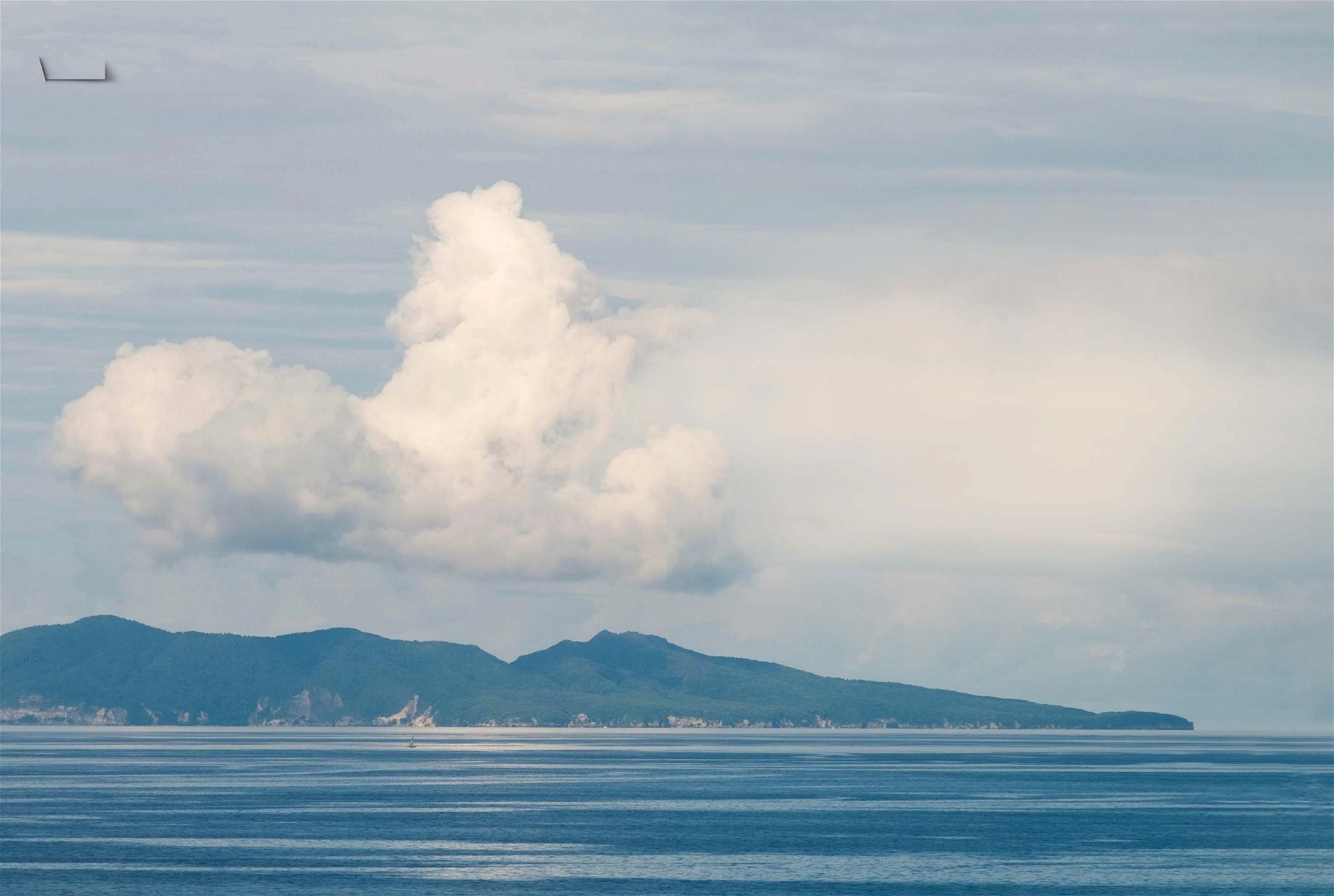
Even when the fishing went cold, we always had a backup plan.
Like the time we anchored up in 120 metres of water off Crater Bay, catching a 10.6kg snapper on a 2/0 tarakihi hook, or that one time we got up early one morning and steamed out to the Pinnacles to target kingfish, only to quickly find out that our small jack mackerel livebaits lowered to the bottom were rather deadly on some rather nice-sized snapper.
These are just some of the memories that will remain entrenched in my mind for many years to come. It was snapper fishing at its finest, and you, too, can catch them if you wish to pursue it.
Snapper
Mayor Island is a fantastic island to snapper fish when the conditions are right. I’ve been pretty lucky on the occasions I’ve been there, and we have had some of the best snapper fishing sessions here at dusk when most people are either anchored up at South East Bay or have steamed back home for the night.
Without a doubt, the best time to catch snapper at Mayor Island is at the change of light, with the best fish being caught in that two-hour period from late afternoon to right on dusk – just as the sun is setting over the Kaimai Ranges.
At Mayor Island, we strayline for snapper, and over the years we have had some amazing sessions fishing for them at dusk, casting big strip baits about 30 metres behind the boat.
Here at Tauranga, the bite time for snapper is generally about one hour before low water, and at Mayor Island, if this tide change coincides with dawn or dusk, it’s a surefire thing that you’re in for some exciting snapper fishing.
Over the years, we have had a lot of success casting big, unweighted baits as far away as possible from the back of the boat. We cast whole squid or big strips of skipjack tuna on our Shimano Baitrunners and let them slowly drift down in the water column where the bigger snapper seem to hang well back in the berley trail. I’m not too sure why they do this, however if you’re a regular fisher to the Coromandel, or Firth of Thames even, you’ll be quite surprised at the bigger snapper you will catch if you cast your baits well away from the back of the boat, where the reef edge meets the sand. They tend to hang out in the midwater column and not so much on the bottom whilst they feast up large in the berley trail.
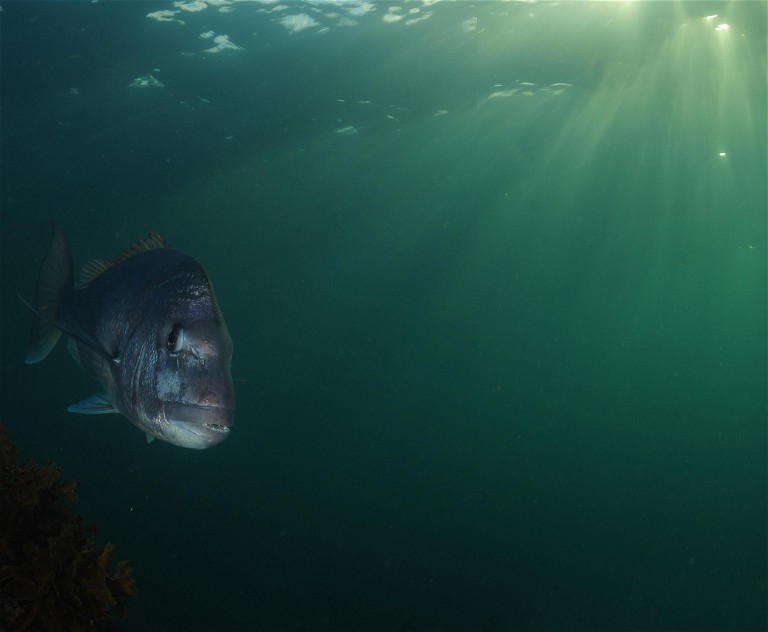
It’s quite interesting to see a great number of boats out at the island that will stay in one spot for half an hour or so, catch nothing, and park up at Honeymoon or South East Bay for the night. This is so common over the summer period, and they generally stop fishing well before dusk – believe me, these anglers are missing out on the best time to catch snapper.
We put in a lot of time and effort to attract these bigger fish, and it wasn’t uncommon for us to sit in one spot for a few hours, continually pumping the berley pot every five minutes or so in the hope of hooking a bigger one.
The berley trail needs to run consistently, as this is what the snapper smell and follow to your boat. We nearly always use the leftover skipjack tuna frames from the fillets we use as bait, and this really seems to attract snapper into the area like nobody’s business, especially if there is a bit of current as it brings them up and over the Mayor Island drop-off over a vast area.
“ WITHOUT A DOUBT, THE BEST TIME TO CATCH SNAPPER AT MAYOR ISLAND IS AT THE CHANGE OF LIGHT, WITH THE BEST FISH BEING CAUGHT IN THAT TWO-HOUR PERIOD FROM LATE AFTERNOON TO RIGHT ON DUSK – JUST AS THE SUN IS SETTING OVER THE KAIMAI RANGES. ”
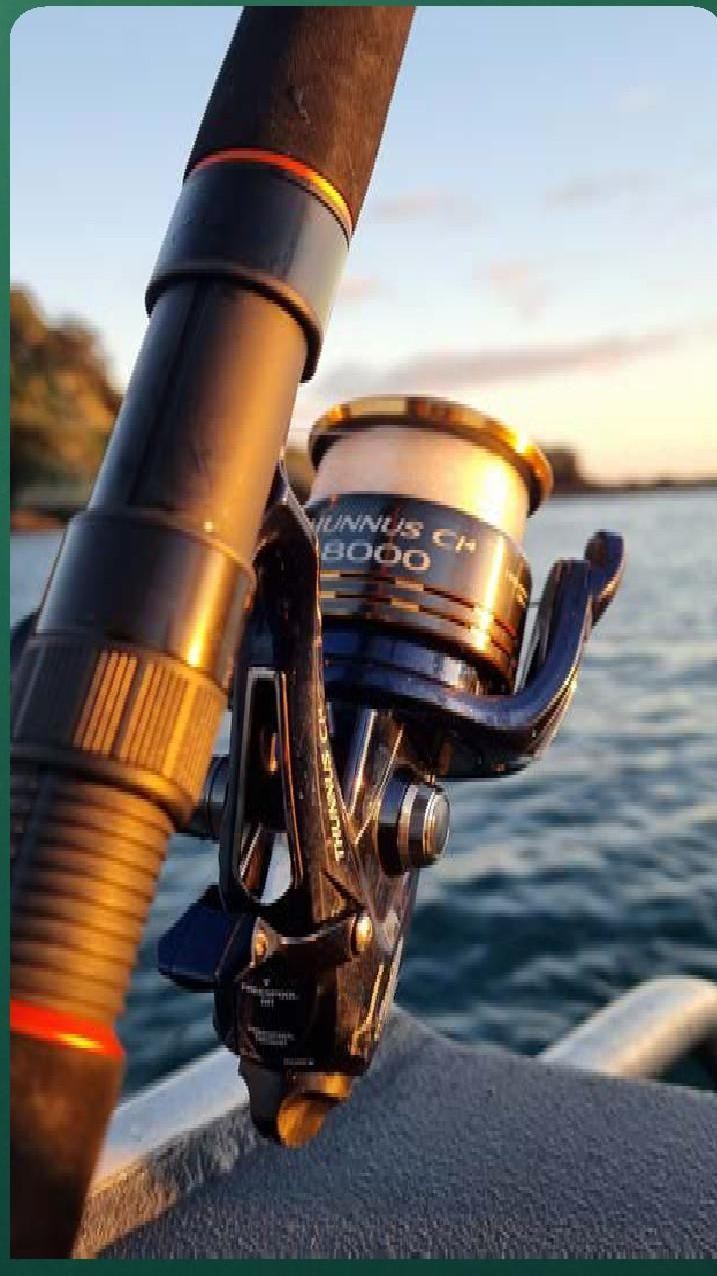
Where and when
The distribution of snapper in the Bay of Plenty is an interesting one. From June to December, the commercial longliners will regularly catch 6-7kg fish on the open sand in 120 metres of water between Motiti Island and the Motu River mouth. I can even remember on one hot sticky summer’s day in January of 2002 when a commercial gillnetter proceeded to park up next to us at the Honeymoon Bay drop-off and haul in a dozen or so snapper between 15 and 20 pounds whilst our baits remained untouched.
On another note, I had quite an interesting conversation with a snapper longliner in Tauranga; he was saying that, while most longline-caught snapper head to the overseas market (which is quite normal for this time of the year), the Asian market is actually demanding that longline-caught snapper be captured from the Bay of Plenty in general because of the colour.
The snapper captured from the Far North are a lot paler in comparison to their Bay of Plenty counterparts, and this all has to do with what the snapper feed on and the areas where they live. Snapper change their colours to suit their surroundings.
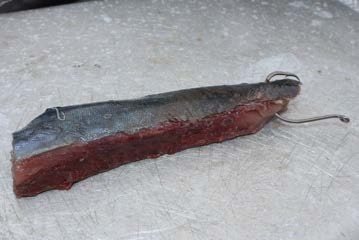
Tarakihi
Tarakihi is certainly an interesting species to target. Whilst most anglers target trophy snapper for the sport, here in Tauranga we target tarakihi for the table, and most Tauranga charter boat operators fish for them on the many reefs and areas of slight papa rock a few miles from the Tauranga harbour entrance.
Tarakihi is one species of fish capable of living 40 years or more. They reach sexual maturity anywhere between four and six years of age, and generally fit into a range length between 25cm and 30cm during this time.
To be honest with you, I’ve only seen a handful of undersized tarakihi in all of my time fishing for them in the Bay of Plenty. Tarakihi are well renowned for long-distance migration, and a tagging programme conducted by fisheries scientists here in the 1980s saw tarakihi tagged and released off Kaikōura recaptured one year later off Port Waikato, the Kaipara harbour, Whangarei, Mōtītī Island, and off Timaru.
In the North Island, tarakihi actually spawn off East Cape, where juvenile fish (or young recruits we like to call them) start their life as first-generation fish before making their way into either the Bay of Plenty or Hawkes Bay fishery as young adults in year two and three. Off East Cape, spawning starts taking place from late summer and into early autumn, and throughout the summer months targeting tarakihi recreationally is deepwater fishing at its best.
Where and when
Throughout the summer we tend to fish on the outer Bay of Plenty reefs off Tauranga or Whangamata. We fish anywhere from 60 metres to around 120 metres or thereabouts, in areas such as the Penguin Shoals or the Pinnacles (which is located roughly halfway between the Penguin Shoals and Mayor Island). However, as we get into spring time, this is where visiting anglers to the region can have a great time targeting them, as the tarakihi schools move onto the inshore reefs on mass and mill around the areas of slight papa rock in great numbers until summer. During winter, tarakihi move right in close, between Papamoa Beach and Motiti Island in 20-30 metres at times, and I’ve heard of them being caught shallower.
“ WE CAST BIG, UNWEIGHTED BAITS SUCH AS WHOLE SQUID OR BIG STRIPS OF SKIPJACK TUNA ON OUR SHIMANO BAITRUNNERS AND LET THEM SLOWLY DRIFT DOWN IN THE WATER COLUMN… ”
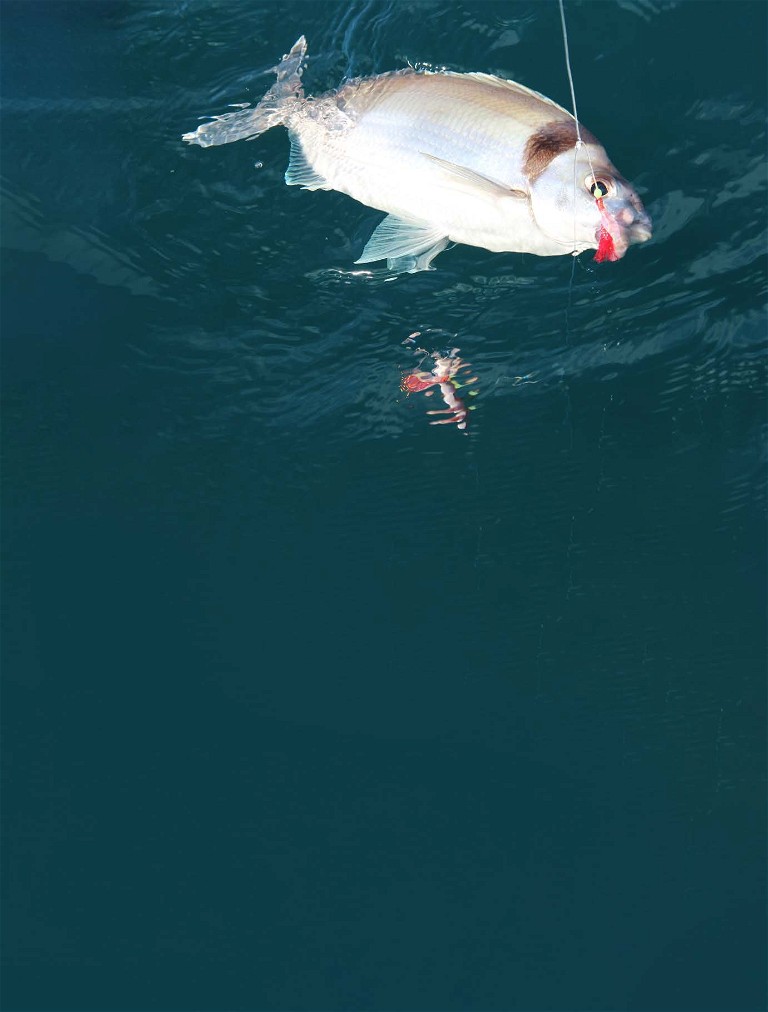
“ FLASHER RIGS RIGGED WITH 3/0 RECURVE HOOKS ARE PERFECT FOR TARAKIHI FISHING AS THE TARAKIHI SIMPLY JUST HOOK THEMSELVES IN THE CORNER OF THE MOUTH WHEN YOU RISE THE ROD TIP GENTLY. ”
When we were kids, we used to collect tuatua and pipi at Papamoa Beach at low tide, and take them out to sea with us for bait when Nana Carla Carey used to shout me a trip out on the local reef fishing boats such as the Deepstar, Manutere, Te Kuia or Ratahi. And for $20 for a half day’s fishing trip, tarakihi fishing for the table on these legendary boats was where it was at. It certainly used to provide us kids with a lot of fun and excitement, and every kid out there should be able to experience it.
We used to send down small 2/0 or 3/0 hooks on ledger rigs baited with tuatua or pipi, even squid tentacles would do the trick, and it wasn’t uncommon to sometimes catch two or three at a time if the tarakihi schools were really on the bite. Flasher rigs rigged with 3/0 recurve hooks are perfect for tarakihi fishing, as the tarakihi simply just hook themselves in the corner of the mouth when you rise the rod tip gently. There is no need to strike them as tarakihi have really soft mouths, and when they’re baited with a tiny bit of bait these rigs certainly work a treat.
I cannot emphasise enough about using small hooks. Unlike snapper, tarakihi have a small and soft mouth, so small hooks combined with small baits are the go here. I see it all too often when visiting anglers come down to the Bay of Plenty from Auckland or from the west coast with their bigger hooks and baits for snapper – fine if you want to target snapper, however they are really missing out on targeting these schooling tarakihi. I know it may seem a bit hard to get your head around, but by sending smaller 2/0 or 3/0 hooks on ledger rigs deep down to the bottom it will really increase your chances of catching these schooling fish.
In winter, if you use your head, there are another couple of ways to increase the odds. Firstly, one of the local charter boats is bound to be out tarakihi fishing at least once daily, which will always give you a good indication of which depth the tarakihi schools are moving about.
Secondly, when you do a sounder search looking for the tarakihi schools on the bottom, turn your sounder’s gain down a tad and concentrate on looking at the bottom lock feature on your sounder because they generally hug right on the bottom of slight areas of papa rock and on the reef.
In summer, off Tauranga we used to find the tarakihi would start moving off the inshore reefs and out deeper onto areas of mud, which is why we probably get a tonne of snapper on the inshore reefs instead, because either the snapper move in or take over the inshore reefs, or the tarakihi just seem to move out.
“ WHEN WE WERE KIDS, WE USED TO COLLECT TUATUA AND PIPI AT PAPAMOA BEACH AT LOW TIDE, AND TAKE THEM OUT TO SEA WITH US FOR BAIT WHEN NANA CARLA CAREY USED TO SHOUT ME A TRIP OUT ON THE LOCAL REEF FISHING BOATS SUCH AS THE DEEPSTAR, MANUTERE, TE KUIA OR RATAHI. ”
Hāpuku
As we come towards the end of the southern bluefin tuna season, many anglers start thinking about deepwater fishing, particularly hāpuku and bass – the two species of grouper in New Zealand waters. Both species are slowgrowing and long-lived, with fully mature adults estimated to live between 40 and 60 years old.
The bass is the deep water variety of the species with its grey-blue colouring, whereas the hāpuku has more of a grey-brown colouring and a protruding lower jaw.
Although you can catch both species in the deeper water, hāpuku tend to live in a bit shallower water than bass, anywhere from 150 metres to about 220 metres, whereas bass seem to hang out on the deeper knolls off Tauranga, with some good fish coming in recently off the outer knolls between 280-380 metres.
The cold snaps are the signal for the hāpuku to swim into shallower water to spawn. When you get these cold snaps, this is when the hāpuku move in from the outer Mayor Island knolls onto the mud, particularly mud banks or knolls with areas of mud around them.
By pulling out any marine chart of the Bay of Plenty, you should be able to identify a number of likely looking spots. You will still get them on the knolls of course, however when we get those cold snaps the hāpuku will either move up to the tops of these knolls between 180 metres and 220 metres if you are fishing in the deeper water, or swim into even shallower water inside the continental shelf onto the mud banks – again, anywhere from 220 metres of water right into about 150 metres.
The first thing about hāpuku is being able to find them. If you’re steaming up to a knoll, a mudbank, or any bottom fishing structure you wish to take a look at, always take the time to stop and do a couple of dummy drifts to see which direction your vessel is moving with the currents. Once you have worked that one out, whatever side of the knoll or bank the current is flowing into, that’s the side that the hāpuku will be feeding on. And that goes for all deepwater species, bluenose and bass included. I’m not too sure why, however a lot of these deepwater uglies seem to like facing the current.
Where and when
June, July, and August used to be the prime time for them on the mud banks between Mayor Island and towards Mōtītī, although sometimes it would continue right until spring. This is not applicable to just Tauranga either and happens right around the country.
When I was a crewman commercial longlining for them, we used to have really good morning bites right at the crack of dawn. Hāpuku are notorious early-morning feeders, especially in the days and week around the full moon period. If you are not on the grounds already fishing for them at dawn, you will more than likely miss out on the one bite time, which is why a lot of anglers miss out on targeting these fine eating fish throughout the daytime. As soon as that sun is well above the horizon, the hāpuku just disperse, and while you will still get the odd one here and there it can become a bit of a struggle.
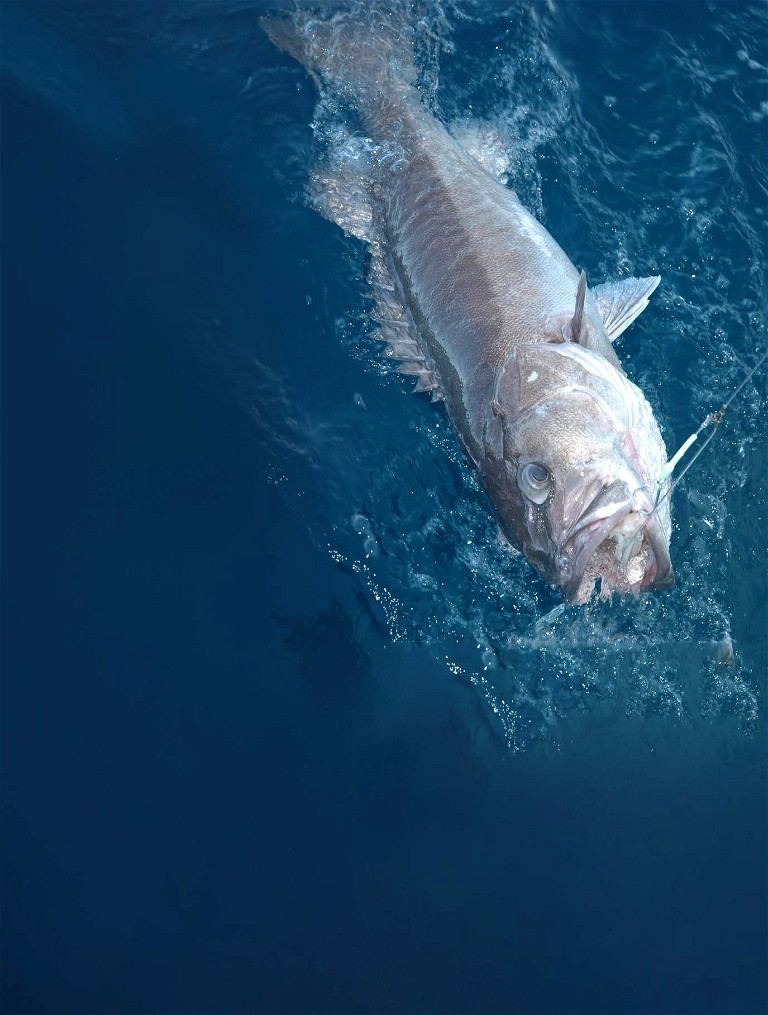
“ THE COLD SNAPS ARE THE SIGNAL FOR THE HĀPUKU TO SWIM INTO SHALLOWER WATER TO SPAWN. ”
If you can be at the grounds an hour before dawn, you can get a good morning bite for a couple of hours or so before they just switch off and scatter, and you spend the rest of the day setting drop lines for bass and ling in the deeper water instead because the hāpuku are not as concentrated.
The same principle applies to bluenose – bluenose are early-morning feeders and our best times to catch them were between 4am and 6am in the morning. As soon as that sun comes up above the horizon, just like the hāpuku, they scatter and are not concentrated or schooling close together.